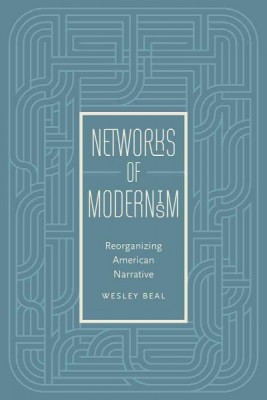| Networks of Modernism: Reorganizing American Narrative Contributor(s): Beal, Wesley (Author) |
|
 |
ISBN: 1609383516 ISBN-13: 9781609383510 Publisher: University of Iowa Press OUR PRICE: $52.25 Product Type: Paperback Published: October 2015 |
| Additional Information |
| BISAC Categories: - Literary Criticism | American - General |
| Dewey: 810.911 |
| LCCN: 2015004899 |
| Physical Information: 0.5" H x 5.9" W x 8.9" (0.55 lbs) 190 pages |
| Descriptions, Reviews, Etc. |
| Publisher Description: Networks of Modernism offers a new understanding of American modernist aesthetics and introduces the idea that networks were central to how American moderns thought about their culture in their dramatically changing milieu. While conventional wisdom holds that the network rose to prominence in the 1980s and 1990s in the context of information technologies, digitization is only the most recent manifestation of networks in intellectual history. Crucial developments in modern America provide another archive of network discourses well before the advent of the digital age. The rise of the railroad recast the American landscape as an assortment of interconnected hubs. The advent of broadcast radio created a decentralized audience that was at once the medium's strength and its weakness. The steady and intertwined advances of urbanization and immigration demanded the reconceptualization of community and ethnic identity to replace the failing "melting pot" metaphor for the nation. Indeed, the signal developments of the modern era eroded social stratification and reorganized American society in a nodal, decentralized, and interpenetrating form--what today we would label a "distributed" network that is fully flattened and holds no clustered centers of power. In this ferment of social upheaval and technological change, the moderns found what we would today term "the network," though they did not have the vocabulary for it that we do now, to be a versatile model for their aesthetic experiments in representing social space and social relations. Whether they used the figuration of the network as a kind of formal experiment to negotiate the tensions between dispersal and unity, fragment and totality, or took the network as a subject in itself, as seen when dealing with crowds or public spaces, the network was a way for writers and artists to conceptualize and explore their rapidly changing society. Through readings of the works of Randolph Bourne, Jean Toomer, Anita Loos, John Dos Passos, and Nathanael West, Networks of Modernism positions the network as the defining figure of American modernist aesthetics and explores its use as a conceptual tool used to think through the rapid changes in American society. |